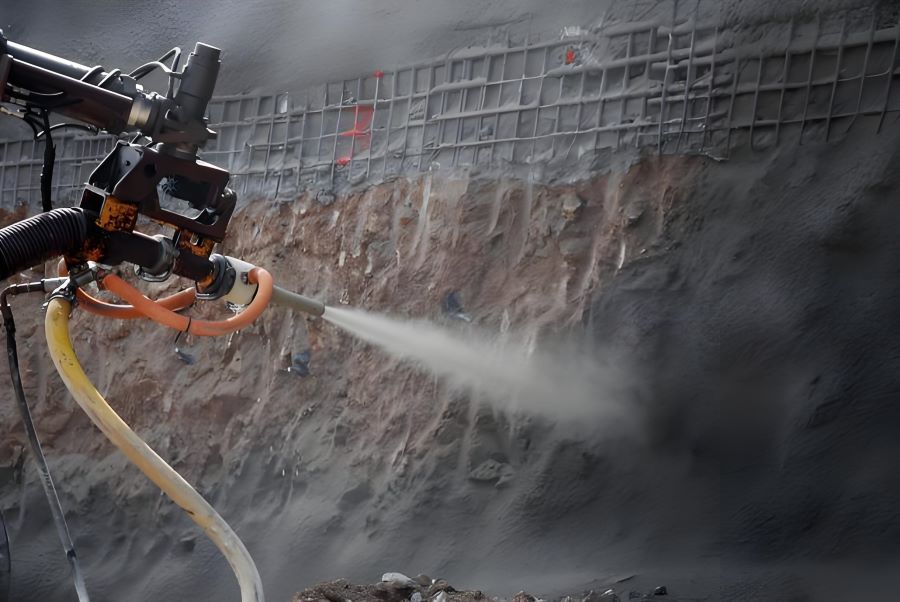What are the different types of shotcrete? Shotcrete, also known as sprayed concrete, is a type of concrete that is projected or sprayed onto a surface at high velocity. It's widely used in construction and tunnel projects. There are different types of shotcrete, which can be classified based on the method of application and the materials used.

Ⅰ. There are two primary types of shotcrete, based on the method of mixing and application:
1. Dry-Mix Shotcrete (Gunite)
In this method, dry materials (cement, sand, and aggregates) are mixed and fed into the spraying equipment. Water is added at the nozzle during application.
Key Features:
- Advantages:
- Allows better control of water content.
- Minimal material wastage.
- Useful for small or intermittent jobs.
- Disadvantages:
- Requires skilled operators to ensure consistent application.
- Can lead to dust during application.
2. Wet-Mix Shotcrete
Here, all materials (cement, sand, aggregate, and water) are mixed before being pumped to the nozzle. Compressed air is used to propel the mixture onto the surface.
Key Features:
- Advantages:
- Suitable for large-scale applications.
- Less rebound and dust compared to dry-mix.
- Offers higher production rates.
- Disadvantages:
- Requires more complex equipment.
- Harder to control water-cement ratio during pumping.
II. Specialized Types (Based on Additives and Usage):
1. Fiber-Reinforced Shotcrete
- Contains fibers (steel, synthetic, or natural) for enhanced tensile strength and crack resistance.
- Common in tunnels, mines, and slope stabilization.
2. Silica Fume Shotcrete
- Incorporates silica fume to improve strength, durability, and resistance to chemicals.
- Used in marine structures and aggressive environments.
3. Polymer-Modified Shotcrete
- Includes polymers to improve bonding and flexibility.
- Ideal for repair and restoration projects.
4. Accelerated Shotcrete
- Contains accelerators to reduce setting time.
- Useful in overhead or vertical applications.
Each type of shotcrete has its own advantages and disadvantages, and the choice of which type to use depends on the specific requirements of the project, such as the desired strength, durability, and appearance of the finished product.




